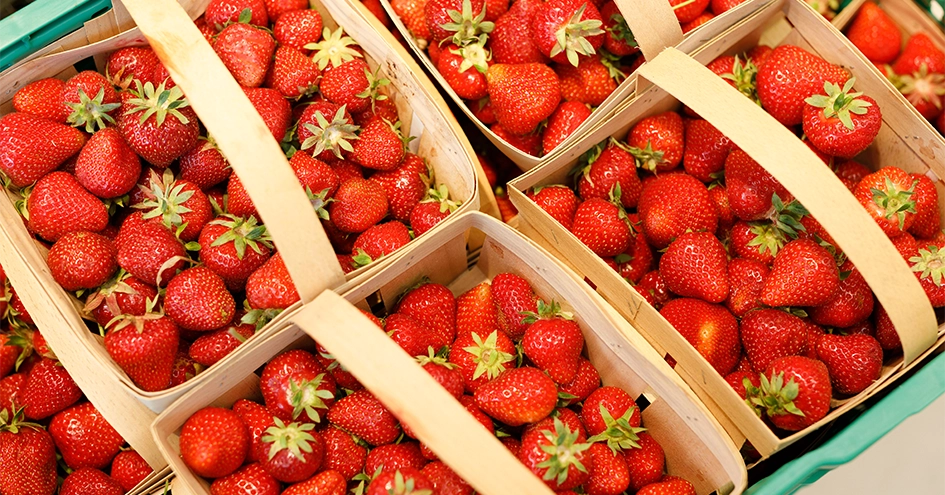The main risks and opportunities identified associated with the circular economy, in particular with the two topics most relevant to the Group (packaging and food waste), are related to the types of resources used (renewable and non-renewable), the waste of resources, and the recovery and recycling of waste. We assess these risks and opportunities using the LEAP (Locate, Evaluate, Assess and Prepare) approach.
Risks and opportunities are considered material where they exceed a 5% potential variation in sales, in which case they are identified, assessed and managed at corporate level. Where they fall below the materiality threshold (variation of up to 5% of sales considering the inherent risk1), they are identified and assessed at corporate level and managed at Company level.

Identifying risks and opportunities includes:
- monitoring the specific regulations of each country (e.g. extended producer responsibility);
- carrying out a detailed assessment of the recyclability of Private Brand packaging, using the Ellen MacArthur Foundation methodology, and of the amount wasted of each food product, following the best practices defined by the Food Loss and Waste Protocol;
- analysing market trends, in particular our customers’ preferences (e.g. convenience in purchasing decisions, or the choice between disposable and reusable packaging).
More information about these measures is provided in points 52, 53. and 54. of Chapter “Corporate Governance”.
Risks
The risks associated with the circular economy were assessed and selected according to their materiality to our activities:
- transition (including political, regulatory, market, technological and reputational risks);
- physical (e.g. the risk of a raw material shortage).
Because of the potential loss to the value chain, food waste is the most material circular economy risk. The risks associated with regulations, particularly on the recyclability of packaging, are of minor importance as, in some cases, they depend on sectoral adaptations.
Market risks, such as the cost differences between recycled and virgin materials, can affect the competitiveness of a product and the reputation of our brands if we do not meet the voluntary objectives we set.
When assessing the risks associated with food waste, both cold chains and packaging are top-of-mind. Packaging plays a decisive role in balancing various dimensions of our business, enabling the preservation of the food we sell, guaranteeing the defence of the integrity and shelf life of the food, logistical efficiency through the format of the packaging, the selection of materials used with direct implications for the circularity of materials, as well as the cost of the product itself. The way we deal with the risk associated with packaging is reflected in the integration of criteria that promote greater circularity in the packaging of our Private Brand and perishable products. Aspects such as the integration of recycled materials, preference for mono-material packaging or preference for colours that are easily distinguished by recyclers’ optical readers are valued in our decision-making. More information on this topic is provided in “Ecodesign of packaging”.
In the particular case of packaging components comprising vegetable fibres, such as paper and wood, we have implemented additional measures towards the regeneration of natural systems and ensure that these commodities do not come from areas associated with deforestation. These initiatives are described in more detail in “Fighting deforestation”.
Opportunities
The opportunities assessed include:
- resource efficiency, such as optimising the use of materials and waste management;
- markets, including supply chain sustainability and the sharing economy (e.g. shared transport packaging);
- financing, such as investment funds for circular economy projects;
- reputation, continuously improving communication and interaction with the various stakeholders, towards meeting their expectations and addressing their concerns.
We continually account for and monitor the use of the different materials that make up our packaging. We also participate in circular economy projects to identify opportunities to optimise the use of materials, increase recyclability, incorporate increasingly more recycled materials, and to test reusable solutions.
We promote waste recovery in our own operations and also raise the awareness of and engage our Companies’ business partners and customers to encourage them to do the same.
The measures implemented to fight food waste are explained in more detail in “Fighting food waste”.
Due diligence relating to the financial assessment of these risks and opportunities will be integrated within the phase-in period stipulated by the sustainability reporting standards.
1 Inherent risk is the level of risk without considering response strategies to a given circular economy-related risk (physical or transition).
